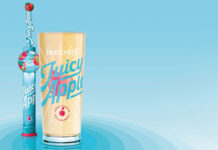
There’s room for innovation at the top say drinks firms
THE Scottish on-trade may be ever-changing but there’s one spirit that seems to remain consistent whatever way the wind is blowing – vodka.
As drinking habits for some consumers change, be it through the cocktail boom, the rise of craft beer or the ongoing expansion of the small-batch gin category, vodka continues to dominate spirits sales.
Figures released by William Grant & Sons as part of the firm’s Market Report for 2014 revealed that vodka accounts for one third of all spirit sales in the UK on-trade in terms of both value and volume.
The report said that vodka sales increased 6.1% in the UK on-trade over the previous year to a value of nearly £1.8 billion.
Premium vodka saw a particular boom in popularity – growing 36.9% by value, while mainstream vodka was up 4.9%.
Pernod Ricard is one of the drinks firms capitalising on vodka’s continued popularity. The firm rounded out 2014 by extending its Absolut range of vodkas.
Adam Boita, marketing controller for Pernod Ricard, said the brand “continues to grow ahead of the total market in both the on and off-trade” and that the firm is “in the perfect position to inject further growth and innovation into the category” by engaging with consumers through new releases such as the Absolut Andy Warhol edition.
The release of the Andy Warhol edition followed the launch of Absolut Cherrys in October. At the time of the launch Absolut brand ambassador Ricardo Dynan said the product was born of a desire to innovate.
“We’re driven by a passion to transform – to find new and exciting combinations that inspire consumers and bartenders alike to create great tasting cocktails,” said Dynan.
Pernod Ricard isn’t the only firm continuing to innovate with vodka.
Diageo has been encouraging licensees and bar staff to reassess their spirits serves through its Spirits Revolution campaign.
The firm, which counts Smirnoff and Cîroc in its stable, aims to help licensees drive extra sales and boost profits through the ongoing initiative.
Sarah Browne, senior brand manager for Diageo GB, said that when it comes to getting the most from a vodka range, licensees should think of the back-bar as “essentially your shop window”.
“Spirits should be grouped together and displayed in an inspiring and highly visible way, and all clutter should be removed,” said Browne.
Boosting vodka sales is about more than the spirit itself, said Browne.
Presentation should also be a consideration for operators when they are dressing the bar.
“Displaying mixers and garnishes, such as fresh fruit, near your spirits evokes a sense of quality and inspires consumers to order a spirit-based drink,” she said.
When it comes to ranging vodka, Browne suggested operators take a three tier approach to their spirits – which the spirits giant has labelled ‘core’, ‘excite’ and ‘must stock’.
‘Core’ refers to an outlet’s “highest volume, best selling spirits”, said Browne, which she said should have “high visibility on the back-bar”.
‘Excite’, applies to the more premium, speciality products on the back-bar, which Browne said should be highlighted by displays of sample serves in order to encourage customers to trade-up.
And ‘must stock’ refers to brands that are considered essential to a particular outlet.
“These are much slower selling but still necessary to stock, therefore don’t need to be as visible,” added Browne.
























